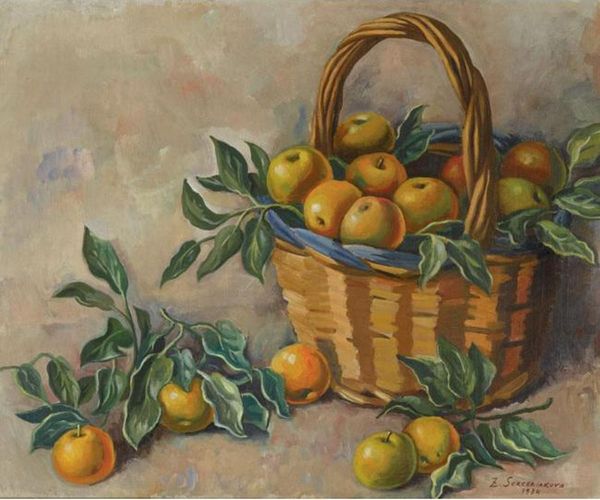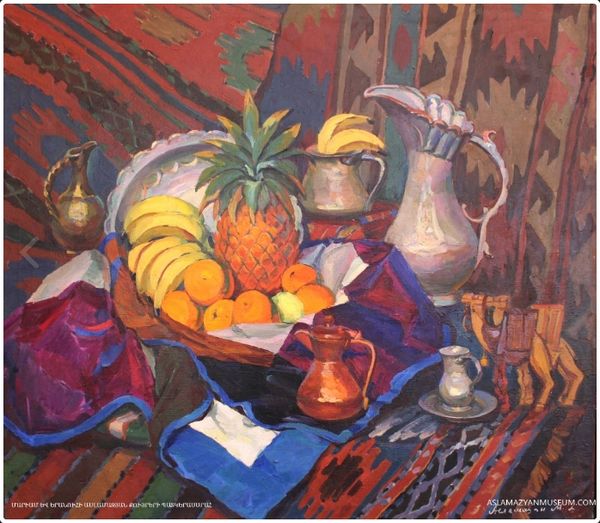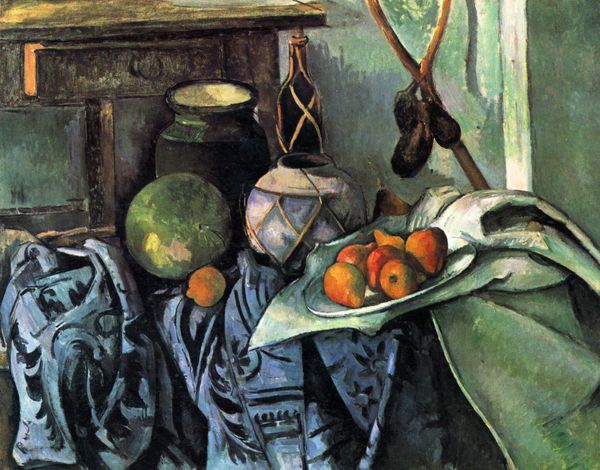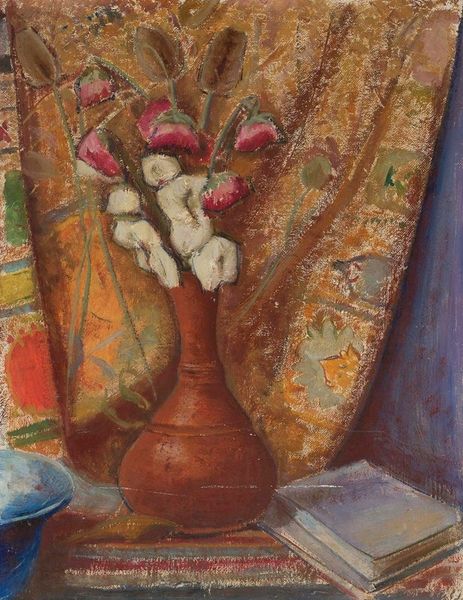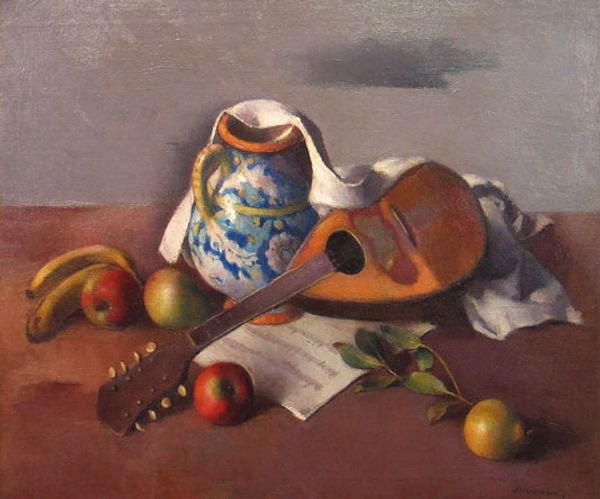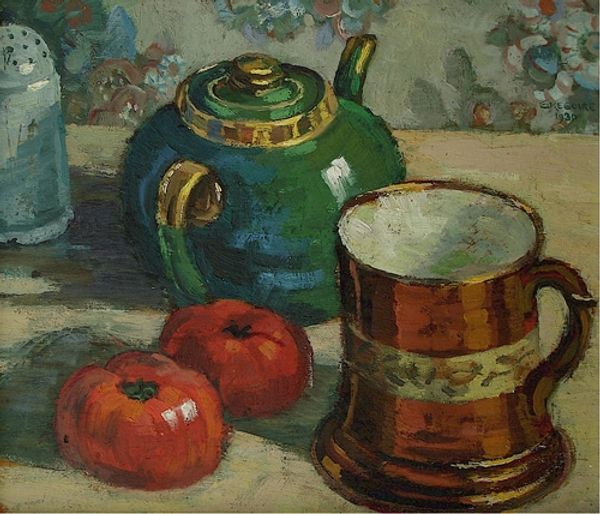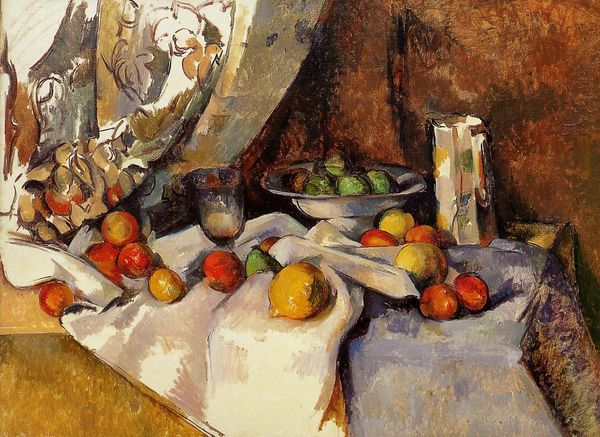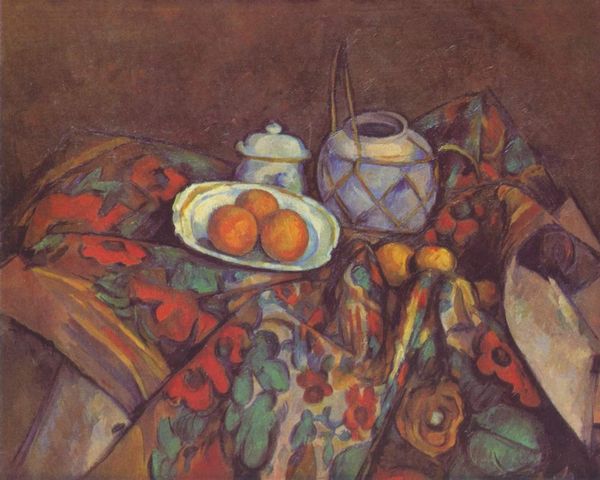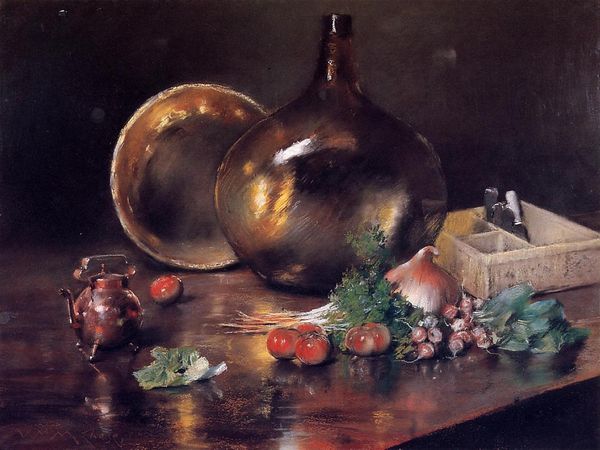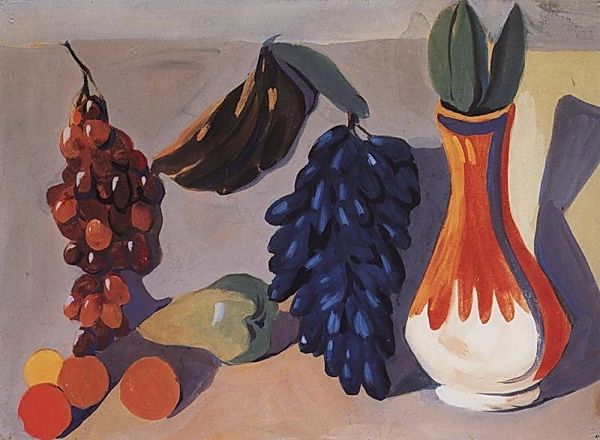
oil-paint
#
still-life
#
gouache
#
oil-paint
#
oil painting
#
realism
Dimensions: 65 x 86 cm
Copyright: Public domain
Curator: This is Eugene Lanceray's "Caucasian Still Life," painted in 1918 using oil on canvas. What strikes you most immediately? Editor: It's a riot of texture and muted colors. The metallic sheen of the pot juxtaposed with the soft fabrics, and of course all that fruit! There is a feeling of rustic abundance, but also maybe a quiet domesticity. Curator: Lanceray painted this during a very turbulent period in Russian history, a time of revolution and upheaval. Does knowing that add another layer? Editor: Absolutely. Still lifes often represent a kind of ordered space, a microcosm reflecting a wider world. The textiles, I think, especially are of great importance here. They seem to speak of cultural tradition. Are those Caucasus rugs, or inspired by that? Curator: Yes, definitely. This still life uses the visual vocabulary of the Caucasus region—the pottery, the woven textiles, the fruit we find there. It grounds the work in a very specific place. There's something powerful in the contrast of the handmade versus what seems factory made now. Editor: So, in a time of such societal fragmentation, it’s as if Lanceray sought to preserve a particular cultural identity, representing a form of resistance to the erasure of regional specificities and culture through homogenization? A celebration of heritage, almost. It seems also the artist suggests something lasting with durable elements and symbols from a strong society. Curator: Precisely. These everyday objects, elevated to the level of art, become symbols of resilience. Lanceray is asserting the value and importance of the traditions of the Caucasus region at a time when those traditions were under threat. Editor: It's quite a moving piece when you consider that. Suddenly the symbolism becomes really important. The weight of those objects, of memory, layered so thickly with meaning. It has quite an impact in consideration with the year in which it was made, which otherwise you would assume as just another beautiful still life. Curator: Yes, that blend of the personal, political, and cultural feels so vital in his rendering. Editor: Well, I am sure visitors now better understand why you chose to bring attention to this particular example of Eugene Lanceray's art. Curator: Indeed! Let’s continue on to the next artwork in the gallery.
Comments
No comments
Be the first to comment and join the conversation on the ultimate creative platform.
